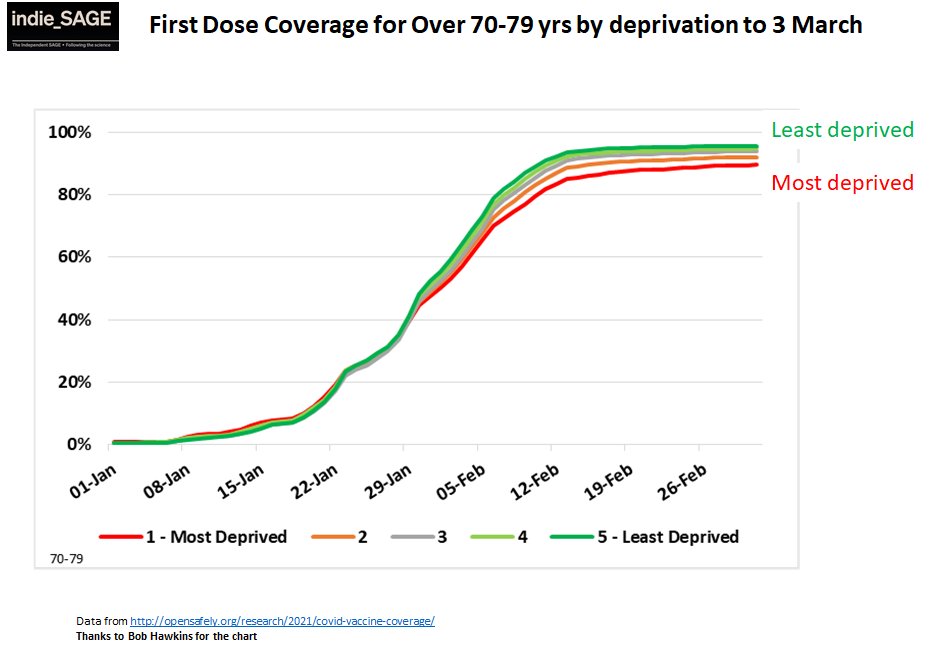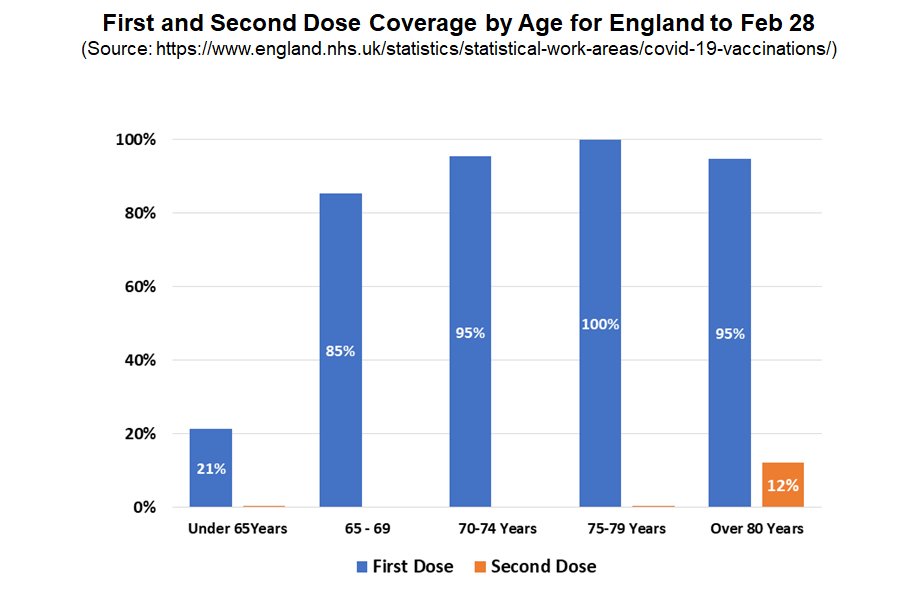
THREAD on vaccination slowdown story:
TLDR: Don't panic!
Tonight a reduction is vaccine supply is being widely reported leading to a pause in rolling out vaccination to the under 50's... bbc.co.uk/news/uk-politi… 1/5
TLDR: Don't panic!
Tonight a reduction is vaccine supply is being widely reported leading to a pause in rolling out vaccination to the under 50's... bbc.co.uk/news/uk-politi… 1/5
Basically, we gave about 11 million people their first dose mid Jan - mid Feb. They need their 2nd dose by end April.
We've been vaxxing about 2.5m/wk last few weeks, but let's say vax supply drops to about 2m/wk for April. Then we need ALL those doses to honour 2nd doses. 2/5
We've been vaxxing about 2.5m/wk last few weeks, but let's say vax supply drops to about 2m/wk for April. Then we need ALL those doses to honour 2nd doses. 2/5
Once most of those are done, we can start rolling out vaccination to new people again (adults under 50) in May.
Assuming we can ramp up to 3.5m/wk from May, we can still offer everyone a 1st dose by mid July. 3/5
Assuming we can ramp up to 3.5m/wk from May, we can still offer everyone a 1st dose by mid July. 3/5
Giving 2nd doses will then go quicker (once no one left to give 1st dose, can just use whole supply for 2nd doses - can offer 2nd vax in 3-12 week window).
So by early Sept all adults could be offered 2nd dose. 4/5
So by early Sept all adults could be offered 2nd dose. 4/5

This is basically the *original* schedule.
If we can get higher than 3.5m/wk from May, we could be done even faster.
An April *1st* dose slowdown was always inevitable *if* we couldn't increase supply (as I said in this tweet thread a month ago)
If we can get higher than 3.5m/wk from May, we could be done even faster.
An April *1st* dose slowdown was always inevitable *if* we couldn't increase supply (as I said in this tweet thread a month ago)
https://twitter.com/chrischirp/status/1361378543104643073?s=205/5
PS basically this seems like bad news now because the stories over the last week had all been about getting far ahead of schedule and millions of extra doses...
so somewhere bad information was given out to journos or something has signficantly changed in vaccine supply
so somewhere bad information was given out to journos or something has signficantly changed in vaccine supply
• • •
Missing some Tweet in this thread? You can try to
force a refresh










